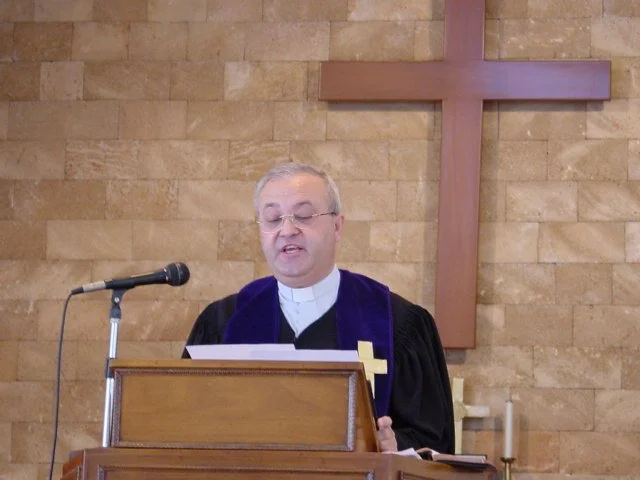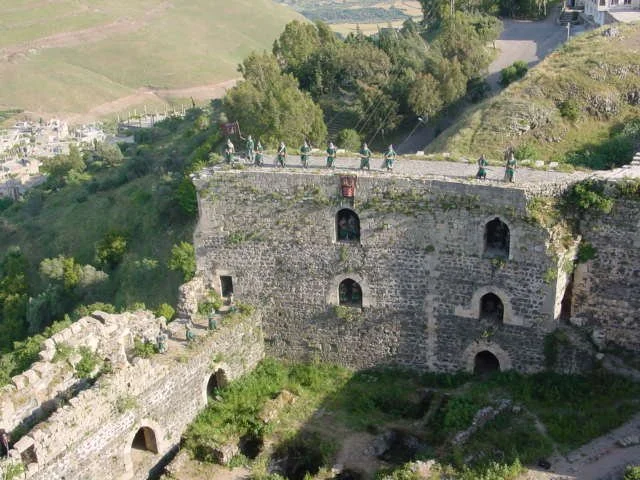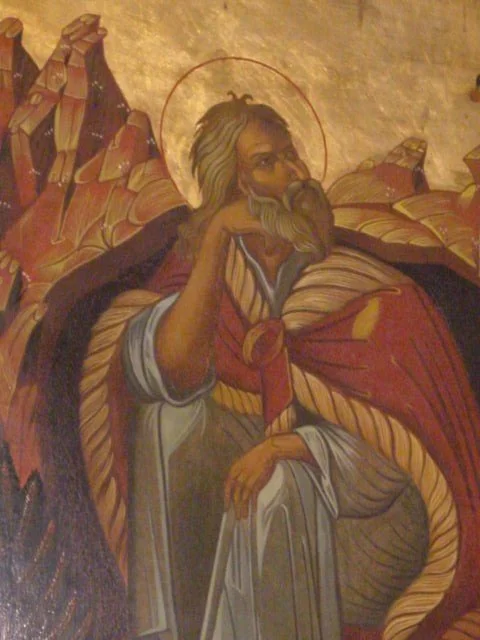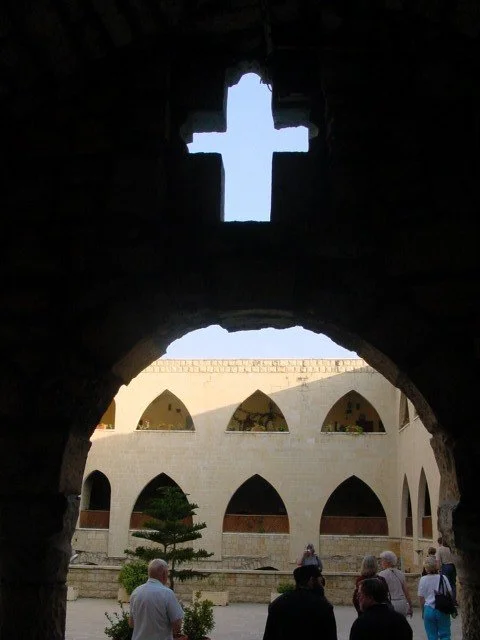May 26, 2002
Elizabeth with a family at the Tripoli Presbyterian Church.
Worshiping at Tripoli Presbyterian Church.
We began the day in worship at Tripoli's Presbyterian Church, which had been totally destroyed in the war. The Synod was able to rebuild the edifice, but not its numbers: before the war it served about 200 families. Now maybe 50 remain. After multi-lingual worship and fellowship (the Lebanese accent is difficult for us "Palestinians"!), we headed off for the second half of our trip across the Syrian border.
Due to our residence of the last two years, and due to relations between Syria and Israel (and the fact that our visa stamp comes from Israel), crossing into Syria is usually impossible. Even with a second passport, it is difficult - the authorities will grill it with an aim to uncovering how you might have entered Israel at some point. Thus, entering with a group - at least for the time being - was the best way for us to get here.
While we waited at the border crossing, the pastor of the nearby Presbyterian church and his wife brought us an extravagant lunch on the bus - meat and cheese pies, beverages, even dessert! There was more than enough to go around (and then some). This, combined with the fact that they were allowed into the military border control area because they were delivering food, was a potent reminder of Middle Eastern hospitality.
The Wadi al-Nasara.
We then headed past towns like Homs for our evening resting place in Wadi al-Nasara (the Christian Valley), so named because of the presence of so many Christian towns and villages through the centuries. Syria has an estimated Christian population somewhere between ten and fifteen percent. It's not as much as in Lebanon (nearly half) or as numerous as Egypt (in the millions), but it's at least twice the percent in Iraq - which is more than twice that of Israel, Palestine, and Jordan.
The Krak des Chevaliers.
Our hotel rests beneath the shadow of the Krak des Chevaliers, the mother/grandpappy of all Crusader castles. It was so long ago that it is hard to remember at times that the Crusaders held great portions of this whole area for a couple hundred years - it seems like a blip in history, but it is good to recall that it's about as long as our nation has existed.
Jordanian actors along the wall.
While we were exploring the immensity of the castle, we saw a Jordanian group filming a historical drama for TV. Seeing the actors decked out in costumes was jarring, especially as they were surrounded by the modernity of lights, cables, and cameras. We also enjoyed seeing the mix of Crusader and later Mamluk architecture in the building. Most of the 40 villages in the Valley below have remained Christian, with the exception - ironically, perhaps - of the village closest to the Krak.
Icon of St. John the Baptist at the Greek Orthodox monastery.
In the Valley, we visited St. George's Monastery, another Greek Orthodox site. With fifteen monks and a 1500 year old church, they also have active summer camps, especially for youth and laity, including training in Byzantine music, some of which they sang for us in the ancient chapel. A return trip might be in order.
Monastery of St. George.
One interesting piece of history there is a document from the time of Mohammed's followers which explicitly forbids anyone from touching the Monastery. Given the Crusader history (which was not kind to the indigenous Orthodox communities either), having such a document has been helpful in the passing centuries. It is written in an elegant, almost illegible ancient Arabic, then "translated" to a more modern script.
We headed back to the hotel for supper before gathering out on the balcony to de-brief. Given our recent experiences, it seemed like a necessary thing to do. Much of the talk centered around strategy - how do we share these stories when we get back? It's a good question, one that we're asking ourselves a lot as we get ready to head back for two months of visits State-side this summer. Looks like it's one we'll be asking for a while.







